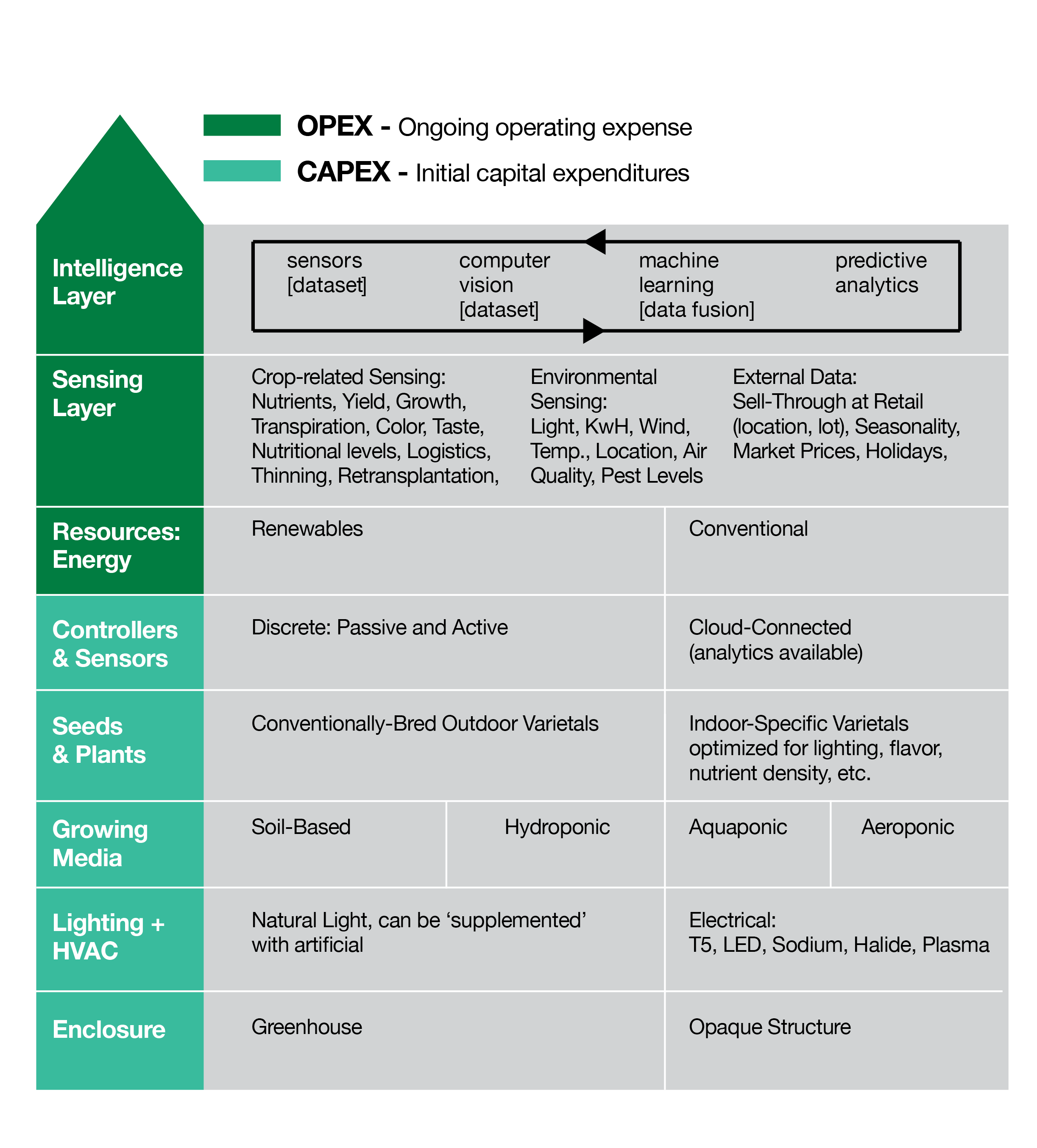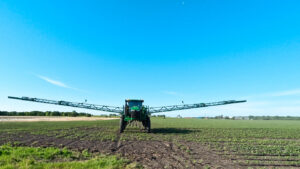Editor’s Note: Malika Cantor is a partner at Comet Labs, a venture capital firm and research lab focused on artificial intelligence, and Micki Seibel is head of product at Orange Silicon Valley, part of French telecommunications giant Orange. The two organizations recently partnered on the publication of a report entitled: Bringing Digital Intelligence to Indoor Farming — urban agriculture in the age of AI.
Here Cantor and Seibel write about some of the report’s key takeaways and data points.
Since 2013, the number of new indoor agriculture facilities in the United States and Canada has risen sharply as the cost to build and operate them has decreased. These operations are not your father’s greenhouse. This indoor ag is highly automated and data intensive. It is more akin to manufacturing than farming, and it has an important role to play in our food system. Growing more nutritious food closer to the point of consumption is something for which most consumers are willing to pay a premium. With global warming, it’s imperative.
Consumers want it. The environment needs it. So our teams at Orange Silicon Valley and Comet Labs have set out to investigate the technology stack for next generation Indoor Agriculture.
The ability to move crops into controlled indoor environments means that food can be grown independent of arable land. Around 90% of leafy greens in North America are grown in California and Arizona, but 75% of the North American population lives east of the Rocky Mountains. In the United States and Canada, the average leafy green travels more than 2,000 miles (3,200km) before it is consumed.
The advantages that indoor agriculture brings to food production are enormous:
- Uses less water
- Uses fewer pesticides or none at all
- Year-round production
- Ability to move production closer to the point of consumption
- Opportunity to drop genetic traits focused on outdoors — pest resistance, drought tolerance, etc. — in favor of traits for nutrient density and flavor.
- Higher nutrient density and less food spoilage due to shorter distance traveled
- Opportunity to broaden the crop portfolio as economies of scale are reached with current crops -(mostly leafy greens, cannabis, and vine crops like tomatoes).
To make indoor agriculture economically viable, technological innovation is needed. We developed an 8-part technology stack to identify opportunities. It spans the type of structure at the bottom (i.e. greenhouses that uses some ambient light from an outside or fully enclosed structure, such as a building) to the intelligence layer gleaned from massive data sets at the top. We divided the stack into CAPEX (the one-time capital expenditures) and OPEX (the ongoing operating costs).
Advances in intelligent machine infrastructure –- namely the development of cheaper electronics and sensors collecting new data sets, as well as faster computing power and new algorithms –- have laid the foundation for a supplementary source of agriculture. In the indoor controlled context, the farmer works with all sorts of autonomous systems to optimize for nutrition, flavor, and yield given the smaller, more isolated environment. Robots assist with many functions like planting, optimizing fertilizer distribution, identifying and eliminating seedlings that need to be terminated, and the picking, cleaning, packaging, and transportation of crops. These autonomous systems are particularly efficient because they act on data and insights derived from the sensors deployed in the indoor environment that are more effective than in an unpredictable outdoor setting.
How does it work? First, distinct sensors collect different data sets. For instance, a camera collects high-quality pictures of the crop over time that are fed to computer vision analysis software to collect information about the color, shape, and size of the crop. In parallel, a sensor measures relative humidity levels around the crop over time. Finally, a machine learning model is built by fusing the separate datasets (even including external datasets of consumer preferences collected by a retailer) with time as the primary variable. All of these “events” are logged by the model that begins to learn the optimal conditions under which to grow a certain type of crop that the farmer can use. For example, the farmer might learn that when the crop turned a certain color, the humidity levels were particularly low, so a specific amount of water is added to yield a more healthy, dark green, and tasty head of lettuce.
We should emphasize that machine learning does not result in the automation of the farmer’s job. On the contrary, the farmer spends less time guessing things that are best assessed by an intelligent machine and more time identifying new ways to produce cost-effective, nutritious, and sustainable crops.
While all of these advances have enabled us to get this far, there is still a long way to go. At Orange Silicon Valley and Comet Labs we are particularly excited about entrepreneurial developments around cheaper artificial lighting. We are also looking forward to the increased modularity and adaptability of indoor agriculture systems, with the view of empowering more people to grow more nutritious and sustainable food.
On a global scale, the indoor growing industry is developing at a revolutionary pace. Following Japan and The Netherlands that have well developed indoor growing industries, a nascent industry is forming in North America. The CAPEX and OPEX of growing indoors is decreasing, and opportunities exist along the entirety of the technology stack. Although growing indoors may never meet cost parity with outdoor growing and will surely never replace it, we don’t think those are the objectives. Rather, in a world of global warming, moving some crops indoors decreases pressure from ever shrinking arable land, allowing the opportunity to grow more nutritious food and create jobs closer to where consumers live: in urban environments.
To read the full report, click here.






